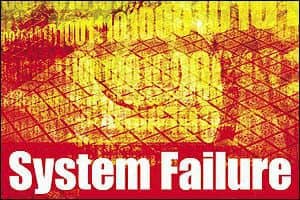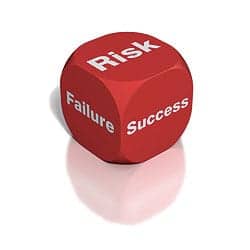The aims of reliability-centered or evidence-based maintenance programs are to maximize resources, quality, and safety.

Debate over the terminology of preventive maintenance (PM) clouds the real debate issue of using evidence to create a safe and efficacious maintenance program. Shakespeare asked, via Juliet, “What’s in a name?” suggesting not very much with the following lines: “That which we call a rose by any other name would smell as sweet.” Unfortunately, the concept is not universal. Ask four different biomeds to describe the meaning of preventive maintenance, and you are likely to get four different answers. (We did.) You’ll also get four different maintenance inventory lists, procedures, and schedules.
The variation in maintenance programs is expected, and even welcomed, especially with evidence-based maintenance that approaches results in programs tailored to an institution’s specific needs and equipment use. But the differences in the definitions of basic terminology have been a source of confusion in the field for years, sometimes diverting from the real point. Simply differentiating between PM and inspection can sometimes be cause for debate, as can the semantics for an “evidence-based maintenance” program.
Between the manufacturer recommendations and the regulations regarding equipment service and maintenance lays a murky area where facilities are left to find their own equilibrium between resources and safety. To strike the right balance, some clinical engineering departments are adapting the philosophy behind evidence-based clinical medicine: the collection and analysis of relevant data to support development of appropriate, efficient, and effective protocols.
Some call this evidence-based maintenance, but, of course, other monikers exist. Whatever it is called, the focus is on program development based on the specific equipment and its actual use and aims to ensure patient and user safety—which is the real point.
Clinical engineering software and databases can provide the tools needed to gather, organize, and analyze the data, but challenges can still arise. Staff must be properly trained and persuaded of the importance, information must be entered in a standardized fashion, and enough of it must be collected to create statistically significant data that will hold up during inspections and legal inquiries. All biomeds share the same goal, regardless of terminology and methods, which is to arrive at the same point of safety and effectiveness.
Semantics: PM Versus Inspection
Mention of the word “inspection” can strike fear in the heart of any hospital employee, not because of worries about misbehavior but rather anxiety related to paperwork. Not only must the right thing be done, but it must also be documented properly.
“If a hospital said it has inspected something and it wasn’t documented, in the eyes of the law, it hasn’t been done,” says Larry Fennigkoh, PhD, PE, professor of biomedical engineering at the Milwaukee School of Engineering in Milwaukee, Wis.
Therefore, everything must be documented, whether it is prevention or inspection related. Documentation protects patients and providers, and offers a way by which biomedical/clinical engineering professionals can measure their success at ensuring safety.
Binseng Wang, ScD, CCE, vice president of performance management and regulatory compliance for Aramark Healthcare’s Clinical Technology Services in Charlotte, NC, relies on literal interpretations of basic terms for clarity. Thus, PM is something done to prevent a failure from happening, whereas an inspection involves identifying a problem or problems whether or not they are evident to the user. “If, during an inspection, you find something that is broken, or even if it’s not, you’re not preventing a failure,” Wang says.
Malcolm Ridgway, PhD, senior vice president of MasterPlan Inc, in Chatsworth, Calif, refers to this literal concept of PM as “true preventive maintenance.”
“It consists of replacing any parts or components of the device that are what I call ‘nondurable’—they’re not intended to last the life of the equipment,” Ridgway says. These “nondurable” parts include gaskets, filters, batteries, oil levels, etc.
The inspection portion for Ridgway encompasses “performance verification” and safety testing, where the biomed identifies hidden defects or failures that could cause a problem, particularly one of high consequence. According to Ridgway, true PM, performance verification, and safety testing have become standard components of PM protocols (eg, replace batteries, check accuracy of results, inspect cords, respectively), adding to the confusion.
Ridgway, therefore, proposes that rather than PM representing “preventive maintenance,” as described by the ECRI Institute, it instead stand for “planned maintenance.”
“I think the straightforward way is to describe what it is all about rather than use this term—preventive maintenance inspection, or PMI—that ECRI invented back in 1972,” Ridgway says.
Others suggest this is already understood. “Some people use the term PMI for preventive maintenance inspection, but inspection of the equipment is certainly implied as part of any PM,” says Michael Gardiner, MSEE, chief biomedical engineer for US Department of Veterans Affairs Medical Center in West Palm Beach, Fla.
This unspoken understanding, however, is the root of the problem, according to Fennigkoh, and why standardization is important. While many biomeds may agree with Gardiner’s theory of PMI, a significant portion does not. “Some institutions may refer to PMs somewhat generically as a performance inspection, where they would just simply verify the device is working correctly and is safe, but there may not necessarily be any preventive activities going on—in other words, nothing is replaced and nothing is recalibrated,” Fennigkoh says. The users (clinician and hospital administration), however, might assume prevention protocols are being performed, leading to further confusion.
This confusion may be eliminated with clear, consistent definitions of relevant terminology—at least within a facility. Whether clinical engineers and biomeds at large can agree will take a while longer, if ever.
The Substance: Evidence-Based Medicine
Despite the disagreements over terminology, there is quite a bit of agreement on the basic philosophies and goals that should guide the development and continual improvement of equipment maintenance programs today.
“You will always need to do PM for regulatory reasons, such as critical life support as defined by The Joint Commission, but an RCM [reliability-centered maintenance] program or evidence-based maintenance program should be a more cost-effective strategy,” Gardiner says. “As medical equipment becomes safer and more reliable, our maintenance strategies should be revised to take advantage of this change.”
The aims of these programs are to maximize resources, quality, and safety, or to get “the most maintenance bang for your buck, if you will,” Fennigkoh says. The basic concept is that a service protocol and schedule are created based on data collected in-house, which identifies actual need versus simply following manufacturer recommendations.
“The recommendations of the manufacturer have to be based on the worst-case scenario of most frequent use, but for your utilization, you might find the manufacturer recommendation too conservative,” Ridgway says. Of course, this means determining the equipment’s utilization within each facility and, in turn, the service needs. And this means research, data collection, and analysis.
“Doctors have to continuously research and find out what, in the newest research data, is applicable to the particular patient he or she is treating,” Wang says. “In our case, the patient is a piece of medical equipment.”
If a facility wants to maximize maintenance dollars and ensure safety, it will need to know the equipment in its inventory, not only its utilization and performance record but also user training and care.
Since the typical hospital averages somewhere around 600 different types of medical devices, according to Ridgway, the information can be much more easily tracked electronically—even though not all 600 devices will require PM. Many clinical equipment or clinical engineering maintenance systems are an ideal tool to perform this manipulation and application of data, which can sometimes be accomplished in real time.
The Foundation: Evidence
The challenge is to collect enough data on each device to be valid and useful. “You need a large amount of data—good, clean data—to analyze and derive conclusions, and that is a challenge for small, stand-alone clinical engineering teams,” Wang says. “If you have a 100-, 150-bed hospital and a three-person team, it would take years to get enough data, and if you don’t have enough data points, it’s meaningless.”
Facilities will want to capture everything they do, from the list of protocol steps to the results of each step. Wang and colleagues devised a set of codes to use to not only identify any problems, but also their severity, impact, origins, and solutions.
“Then, you have the ability to retrospectively go back and ask the database questions,” Fennigkoh says. “For example, on infusion pumps, if every time you went to do an inspection, you found nothing wrong, that is evidence in itself that maybe you are inspecting it too frequently. Even if it’s not every time but a high percentage of inspections—95% or 98% of the time, you go to inspect the device and find absolutely nothing wrong with it—that’s the typical flag that we use to encourage us to think about whether we are doing it too frequently.”
To create a full picture of risk, biomeds should consider the severity of failure as well as the probability. If the devices pass, a 6-month time interval might be pushed to 1 year, 1 year to 2 years, or a device may be removed from the list altogether. Data would then be recorded to indicate if the new schedule works. Similarly, if evidence indicates that every time an inspection is performed, something needs to be replaced or recalibrated, then a legitimate need has been established for a more frequent service schedule.
“It’s doing maintenance based on historical evidence based on the needs of the device in your particular institution,” Fennigkoh says.
This creates greater efficiencies both in workload and finances. Of those approximate 600 device types frequently found in a hospital, about four or five fall within The Joint Commission’s critical life support category and an additional 30 or so are considered high risk; these tend to be subject to greater regulations regarding PM and inspections. Certain devices may also be left off of the PM list, primarily those that either have no parts that require replacing or that present little patient risk upon failure.
In general, more devices are falling into one of these categories as technology advances. Larger fixed devices (such as those found in radiology) sometimes even offer remote monitoring technologies that can provide predictive maintenance assistance, though are not a substitute for PM or an inspection (in the literal sense).
The Justification: Costs and Returns

Using common sense, biomeds will likely not want to completely ignore any equipment. “I do think there is value in TLC,” Ridgway says. “Equipment in hospitals that’s neglected looks pretty ratty, and having a piece of equipment by the side of the bed that looks like somebody cares for it is far better than something that looks grubby.”
However, the institution also does not want to waste resources (whether staff time or money) on equipment inspections that offer no return on investment (and benefit no one). “In addition, you eliminate the risk of a technician or an engineer actually damaging a device that’s working properly trying to inspect it or take it apart when there is nothing wrong with it,” Fennigkoh says.
Using in-house data for analysis, Fennigkoh’s team was able to reduce its inspection inventory by 20% to 25%. Ridgway estimates that a smaller inspection inventory (one that includes the 35 or so high-risk devices) could potentially reduce the biomed workload related to PMs by half.
Such savings could justify the effort that must be put into proper data collection; expense is low. “We’ve done a pilot project for almost 2 years in eight hospitals without any really significant investment in terms of capital or software,” Wang says.
The real costs came in the form of training and time to avoid the “garbage-in-garbage-out” situation. “The evidence has to be clean and reliable. Otherwise, it’s useless,” Wang says. “That’s why staff involvement and dedication is very important. We are talking about a very large amount of documents that need to be analyzed.”
Over the course of the study, his team collected 62,000 records on 40,000 pieces of equipment. Not surprisingly, they found that user issues were as much of a problem, if not more, than actual equipment failures. “In many cases, the problems that we can prevent or inspect or do something about, represent at best 2% to 3% of the problems happening, whereas almost 20% of the issues are due to user problems (abuses, accidental damages, user challenges, and environmental issues), battery problems, and accessories failures,” Wang says. So addressing user issues is often more valuable than PM, because it helps to increase equipment availability and reliability.
Change, however, comes slowly, particularly when data is involved. “The evidence-based concept is a great one, but I don’t think it’s being used a lot, mainly because many hospitals don’t have the evidence they would need to properly determine what an appropriate PM schedule should be or even if there should be one at all,” Fennigkoh says.
He attributes this, in part, to the lack of standard terminology. “The lack of standardization across institutions as to what we call PMs and what is being inspected on a given device [has created confusion],” Fennigkoh says. “You can have the exact same model of infusion pump in 10 different hospitals, and I wouldn’t be surprised if you have five to 10 different ways the device is being inspected, even though it’s a common device.”
|
Search “evidence-based maintenance” for more information. |
More interestingly, the infusion pump may not even be a PM-critical device, according to research conducted by Ridgway and his terminology. His risk analysis found performing PM on infusion pumps was unproductive. Originally, pump failures were frequently related to battery failures, which could be prevented, so hospitals implemented battery exchange programs. Related failures declined. Now most problems are associated with their unreliability.
“They’re in the shop all the time,” Ridgway says, despite PM efforts, suggesting the time spent on this task is unproductive. On the other hand, in a literal sense, battery exchange programs could be considered preventive. “It’s a semantic question whether or not that program is the equivalent of PM,” Ridgway says. So rather than ask if a PM would be more effective by any other name, one should ask if it would be more effective with any other evidence.
Renee Diiulio is a contributing writer for 24×7. For more information, contact .





